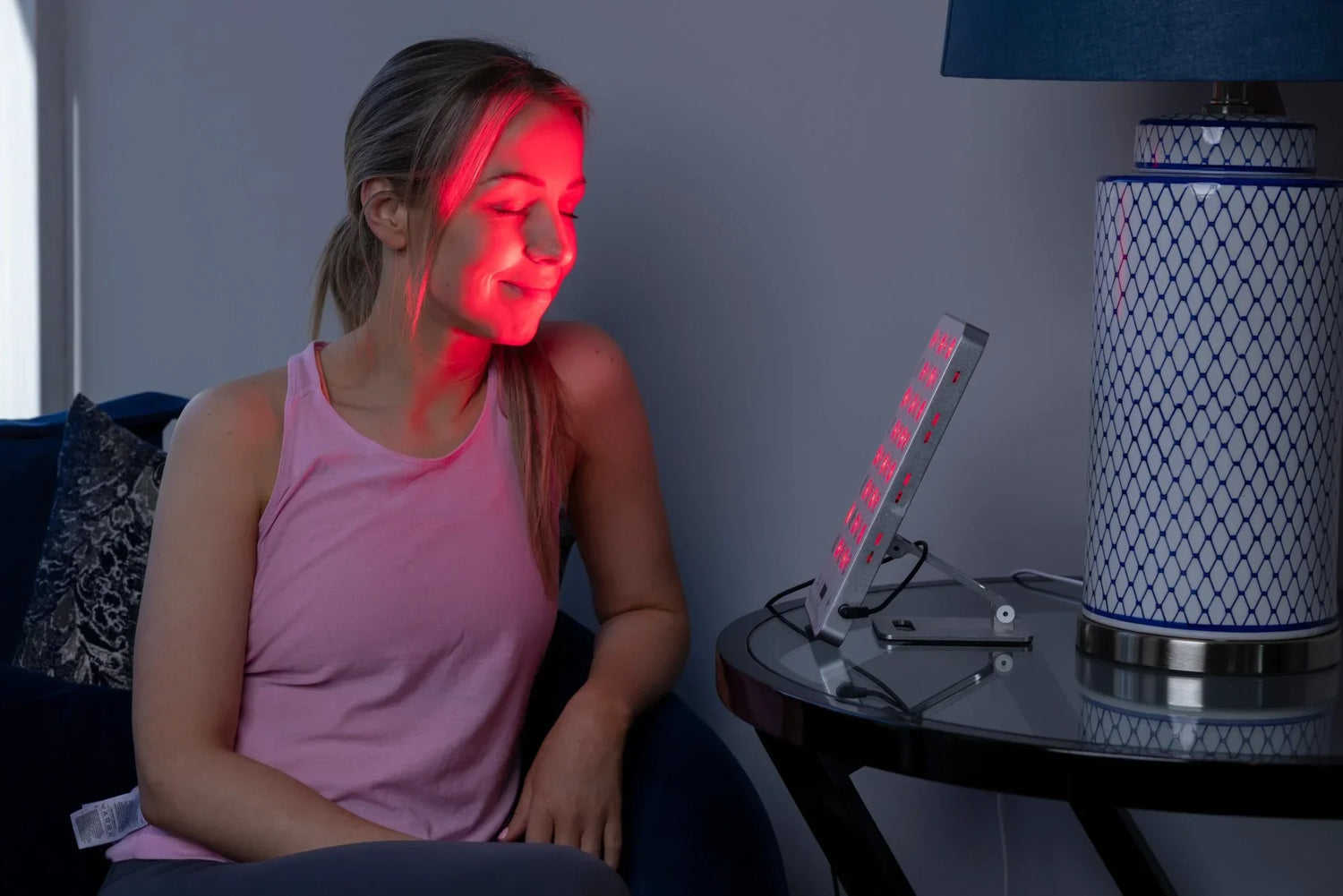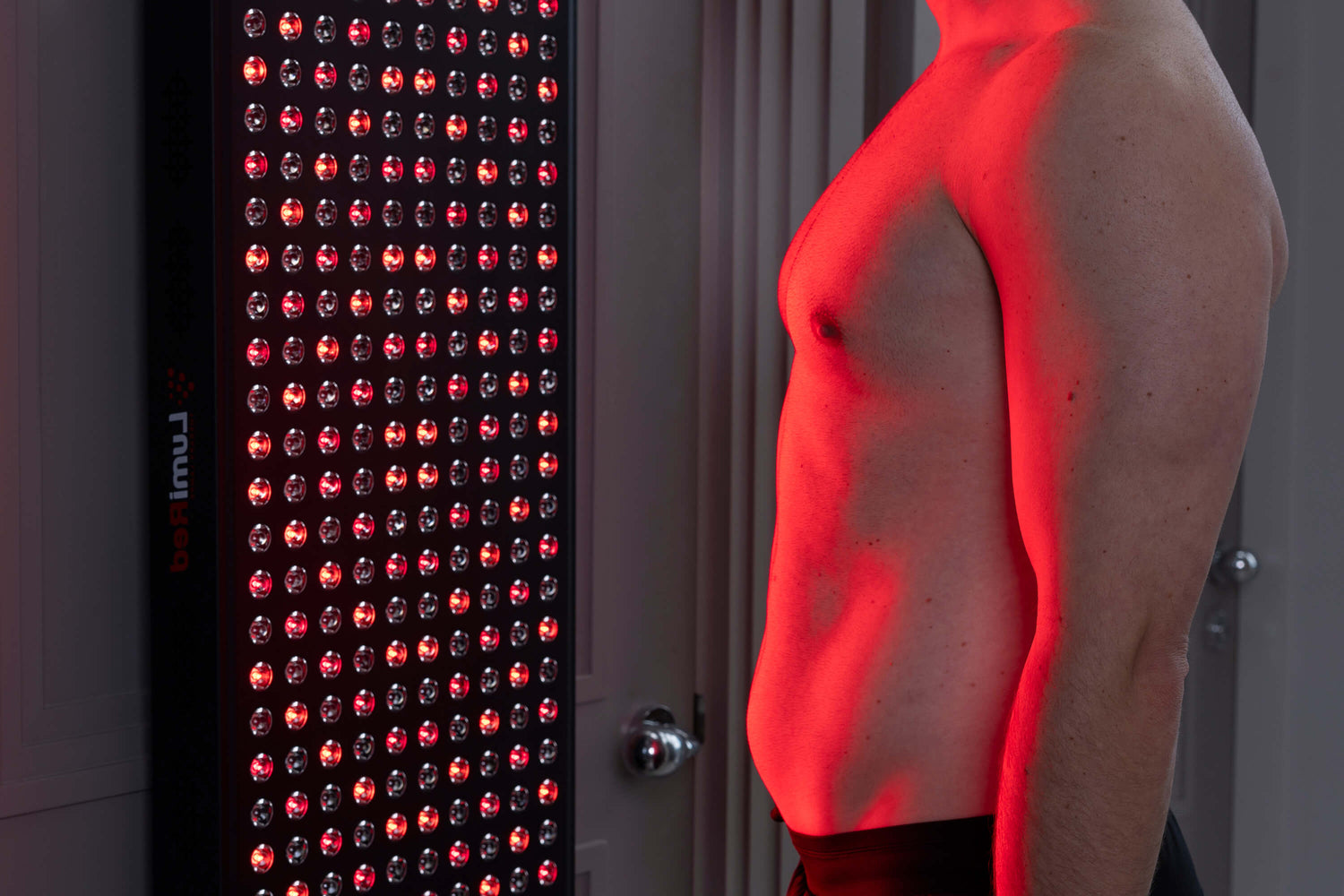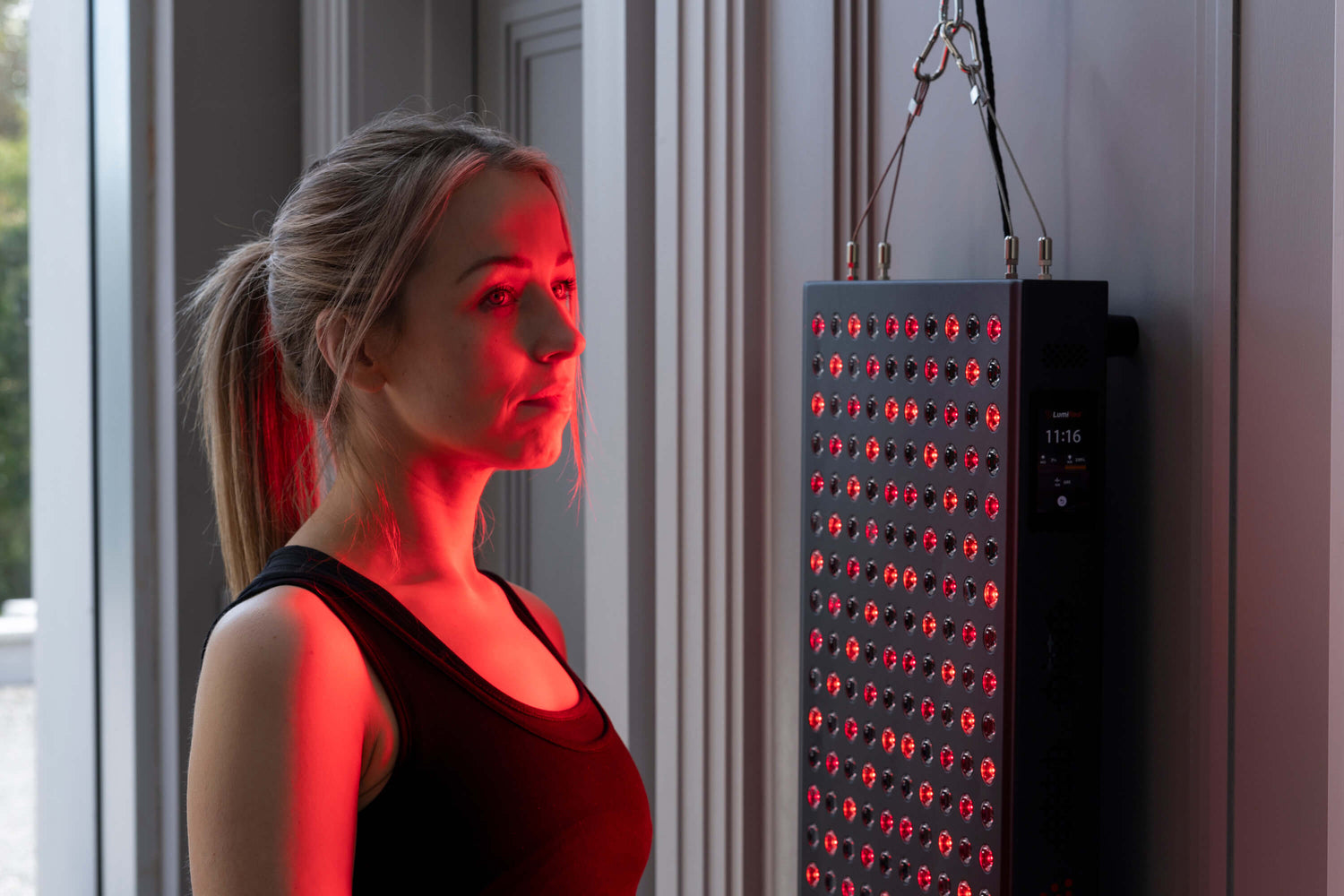In the modern, high-speed world of medical breakthroughs, sometimes the most straightforward answers stand out the brightest — literally. One such answer is phototherapy, a tried-and-true treatment that has gone about changing millions of lives by simply healing with light. Whether it's for intractable skin diseases like eczema and psoriasis or for general skin wellness, light therapy for the skin is now a top-of-the-list solution that's supported by science and real-life success stories.
But what is phototherapy, how does it work, and why is everyone raving about it these days? Let's find out.
Key Takeaways:
-
Phototherapy harnesses UV and red light to safely treat skin conditions like eczema, psoriasis, and vitiligo.
-
Choosing the right device is crucial for effective, at-home light therapy results.
-
Phototherapy delivers visible before-and-after improvements by targeting skin inflammation at the source.
-
Understanding the difference between phototherapy and red light therapy helps tailor treatment to your specific needs.
What Is Phototherapy?

At its core, phototherapy is the use of specific wavelengths of light to treat various health conditions. Unlike just basking in sunlight, phototherapy involves controlled, concentrated light, often in the form of UVB phototherapy or other targeted light therapies designed to penetrate the skin at just the right depth.
Think of it this way: just as plants need sunlight to thrive, our bodies can sometimes need a little extra light to heal. Hospitals have used phototherapy for jaundice in newborns for decades. That same principle, refined and specialised, now helps people manage conditions like psoriasis, eczema, and vitiligo effectively.
Phototherapy is more than just shining a lamp on your skin — it’s a medically supervised, precisely targeted therapy that taps into the body’s natural healing processes.
In short? Phototherapy is simply healing by light.
Benefits of Phototherapy
The benefits of light therapy for skin are far-reaching. For people battling chronic skin disorders, it can feel like a lifeline when everything else fails.
Here are some major benefits of phototherapy:
-
Effective management of eczema and psoriasis: For people dealing with intense itching, redness, or painful plaques, phototherapy for eczema and phototherapy for psoriasis can bring immense relief when topical creams and oral medications fall short. It helps calm inflammation and slow down the overproduction of skin cells.
-
Restoring skin pigmentation: Phototherapy for vitiligo is one of the most widely accepted treatments to help re-pigment the skin. With regular sessions, melanin production can be stimulated in affected areas, slowly blending the skin tone.
-
Fewer side effects than systemic drugs: In contrast to systemic immunosuppressants, phototherapy is local to the skin, which translates to fewer side effects and risks for most patients.
-
Drug-free healing: For those who favour natural or non-drug means, phototherapy is a great option or complementary treatment.
-
At-home convenience: Thanks to innovations in UV light therapy for eczema at home, people can now continue their healing journey without frequent trips to the clinic, saving both time and money.
It’s no wonder that more and more dermatologists recommend adding phototherapy to long-term management plans for chronic skin conditions.
How Does It Work?

Imagine sunlight — but smarter. That’s essentially what phototherapy offers.
In treatments like UVB light therapy, the skin is exposed to a specific wavelength (narrowband UVB, typically around 311–313 nm) that slows the growth of affected skin cells. It’s this slowing down that brings relief to inflammatory conditions like psoriasis and eczema.
When treating eczema with UV light therapy at home, special devices emit therapeutic UVB rays so that patients can follow their treatment regimen from the comfort of their own living rooms. The sessions are short but intense, usually lasting a matter of a few minutes.
For patients with psoriasis, the UVB light slows down the excessive turnover of skin cells, resulting in smoother, less scaly skin. For eczema, it suppresses inflammation and itching, allowing individuals to have clear skin for longer durations.
Does light therapy work for skin?
Absolutely — provided the right wavelength, treatment protocol, and consistency are followed. Clinical trials and countless personal stories have validated its effectiveness time and again.
Another rising trend is red light therapy, which differs from UVB phototherapy (more on that soon). While phototherapy uses UV light to treat specific skin conditions, red light focuses on healing from within by energising cell
Difference Between Phototherapy & Red Light Therapy
It’s easy to lump all light-based treatments together, but there are important distinctions to understand.
-
Phototherapy uses ultraviolet (UV) light — either UVA or UVB — to slow down the excessive growth of skin cells, treat inflammation, and manage autoimmune-related skin conditions.
-
Red light therapy, on the other hand, uses low-wavelength visible red light (typically around 660 nm) and near-infrared light (around 850 nm) to stimulate mitochondrial activity, improve collagen production, reduce wrinkles, and accelerate tissue repair.
In simple terms, Phototherapy eczema treatments aim to directly change the disease behaviour of skin cells, while red light therapy nurtures general healing and regeneration.
Someone managing eczema, vitiligo, or psoriasis is usually prescribed UVB phototherapy. Someone looking to reduce fine lines or heal a sprained ankle faster might turn to red light therapy.
Both are powerful, but used for very different goals.
Before & After Results
One of the most compelling reasons why phototherapy continues to gain popularity is that the results speak for themselves.
If you look at light therapy eczema before and after stories online, the differences are jaw-dropping. Where once there was raw, inflamed skin, now there's smoothness and comfort. Sleep improves. Daily life gets better. Confidence returns.
For psoriasis, patients often see their plaques diminish significantly, leading to major improvements in quality of life. Some studies suggest up to 90% plaque clearance after regular phototherapy psoriasis sessions.
Newborns with jaundice benefit almost immediately from jaundice light therapy at home, with bilirubin levels dropping dramatically in just a day or two.
Phototherapy before and after snapshots aren't just about looks. They're about regained comfort, restored dignity, and feeling like yourself again.
Choosing the Best Device

Choosing the right phototherapy device is crucial if you're looking to bring healing home.
Here’s what to consider when picking a device for UV light therapy for eczema at home or any other condition:
-
Type of Light Emitted:
Look for devices that specifically mention narrowband UVB if you're treating eczema, psoriasis, or vitiligo. Red light devices won’t help inflammatory skin diseases in the same way.
-
FDA-Approved or Medical-Grade Certification:
Health should never be compromised. Make sure your device is cleared by the appropriate health authorities.
-
Coverage Area:
If you have widespread eczema or psoriasis, a larger panel device will save you time and give more even results compared to handheld units.
-
Adjustability and Timer Functions:
Safety first! Devices with built-in timers and adjustable intensity settings help ensure treatments are safe and tailored to your needs.
-
Portability:
If you travel often, consider a compact device so you don't miss treatments.
-
Customer Reviews:
Honest feedback from real users dealing with phototherapy for vitiligo or phototherapy eczema can be a goldmine of insight.
-
Protective Gear:
Some devices come with protective goggles to shield your eyes from harmful UV rays. Never skip these!
Is Phototherapy Right for You?
If you're wrestling with persistent skin problems, phototherapy could be the missing ingredient you've been searching for. Be sure to see a dermatologist first, however, particularly if you have a history of skin cancer, photosensitivity, or are taking medications that render you light-sensitive.
Additionally, while home units offer incredible convenience, they require responsibility and adherence to safety guidelines. Overuse or incorrect use of UVB light can lead to burns, premature ageing, or increased skin cancer risk.
Done properly, though? Phototherapy treatment can feel like finally stepping into the sunshine after years of darkness.
Conclusion
Phototherapy may sound high-tech, but at its heart, it’s a wonderfully simple idea: using targeted light to heal the body.
From managing phototherapy eczema to helping infants through phototherapy jaundice, from soothing stubborn psoriasis plaques to aiding skin recovery post-red light therapy, this form of treatment offers real, science-backed hope. It's a beautiful blending of nature’s oldest resource — light — with modern medical precision.
If you're battling a stubborn skin condition or simply seeking a way to boost your skin's resilience, maybe it's time to ask: could a little more light be exactly what your body needs?
The answer, for many, is a resounding yes.
Red Light Therapy with LumiRed
Ready to let your skin heal, glow, and thrive? LumiRed brings powerful, dermatologist-recommended phototherapy right to your home. Safe, easy, and scientifically proven, our devices help you reclaim comfort and confidence naturally. Discover the LumiRed difference — because your skin deserves the best light. Start your healing journey today!




